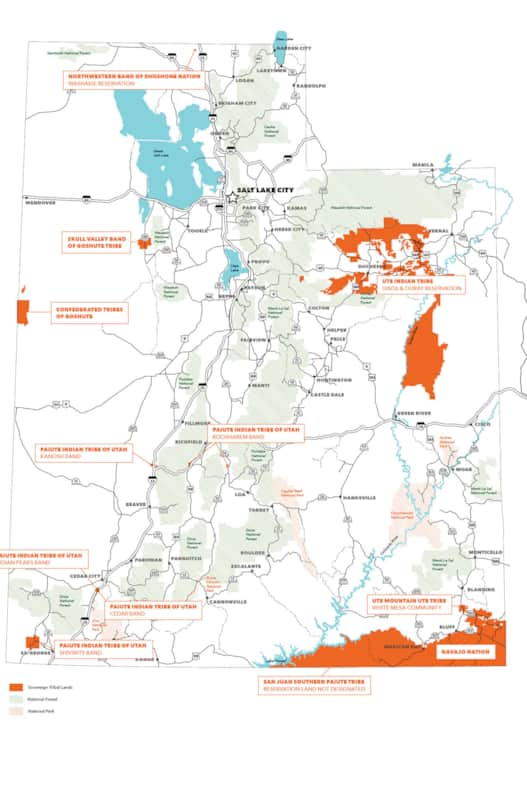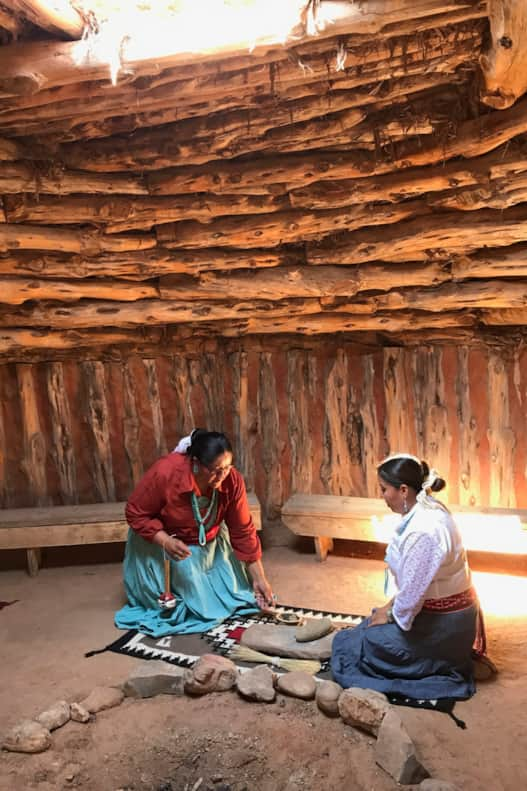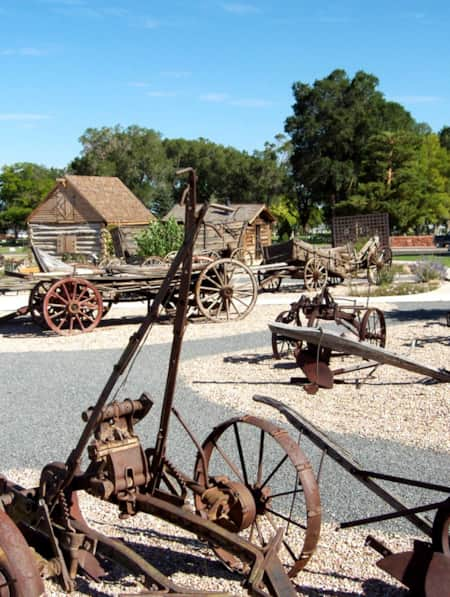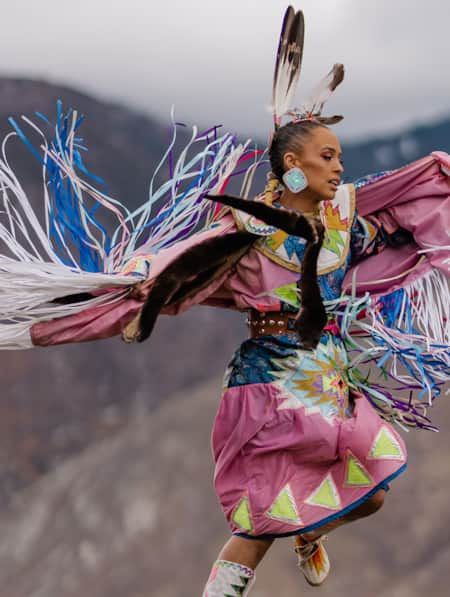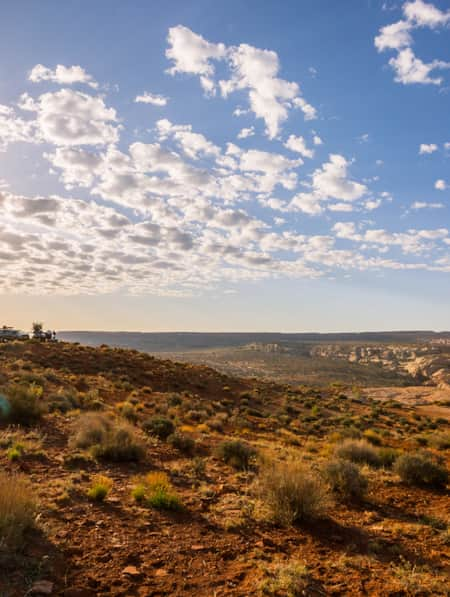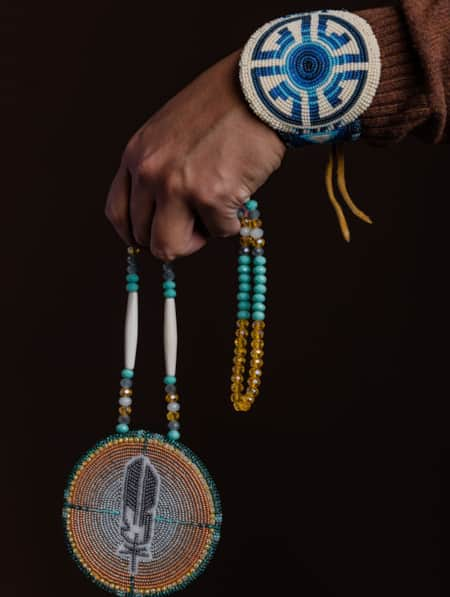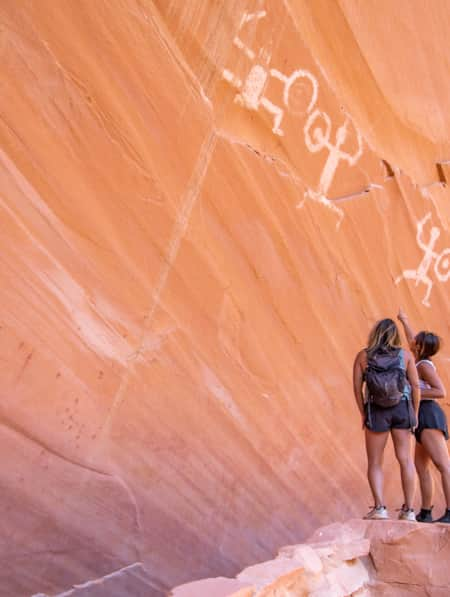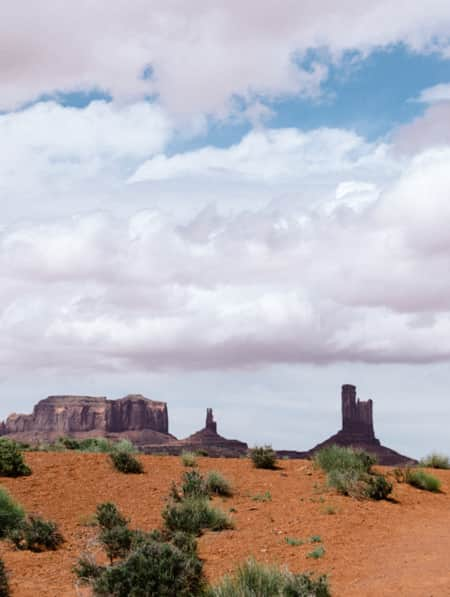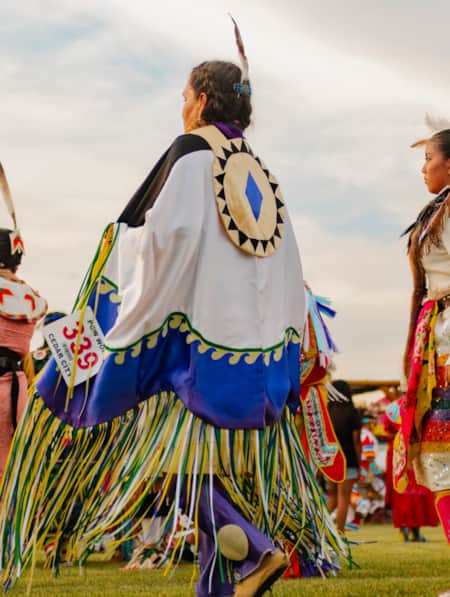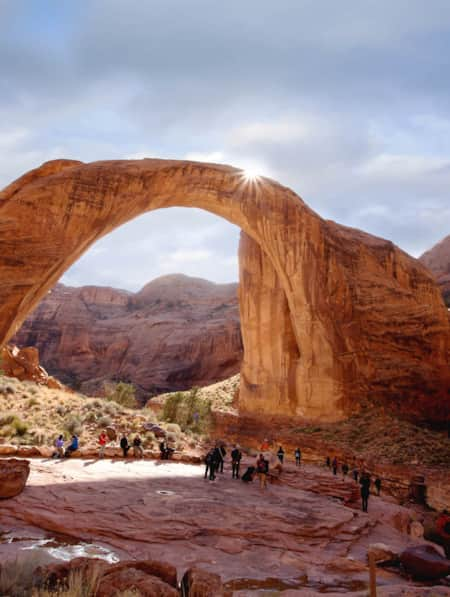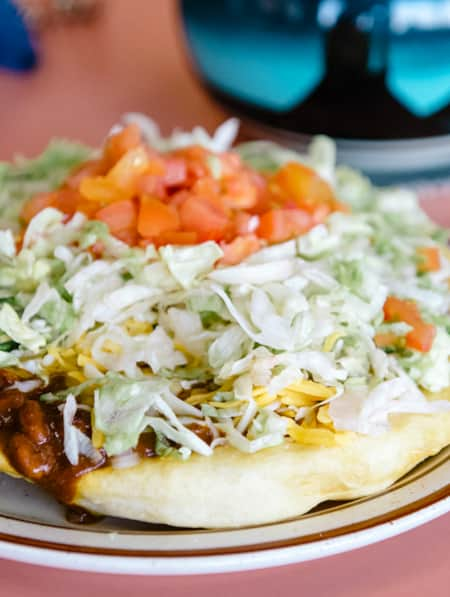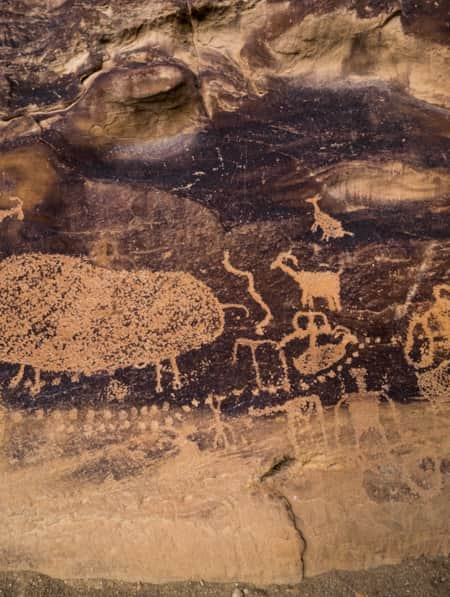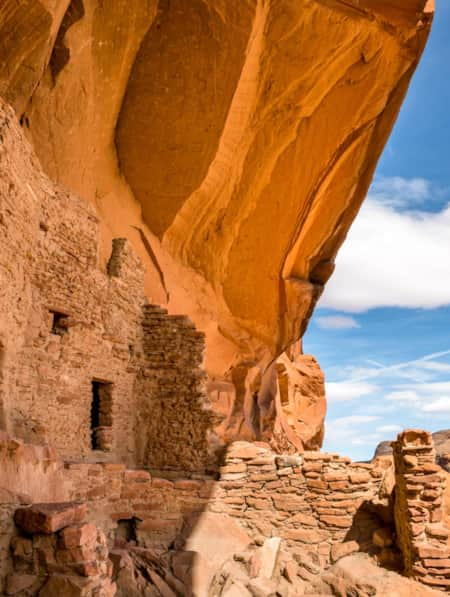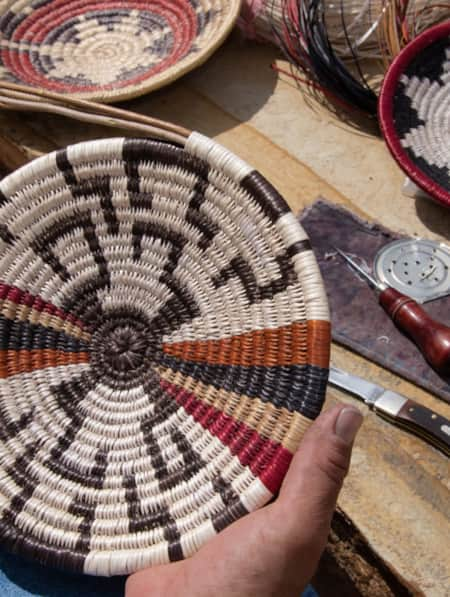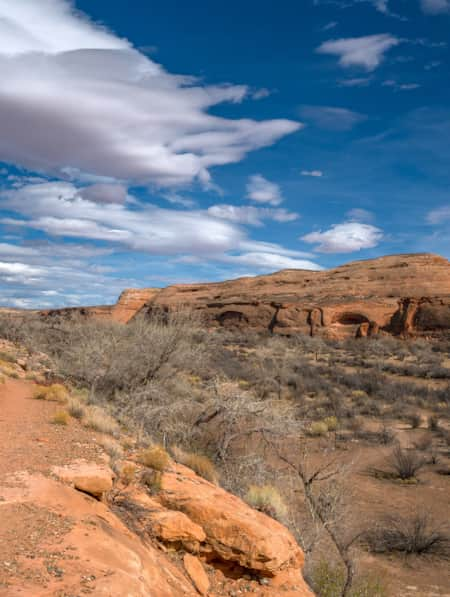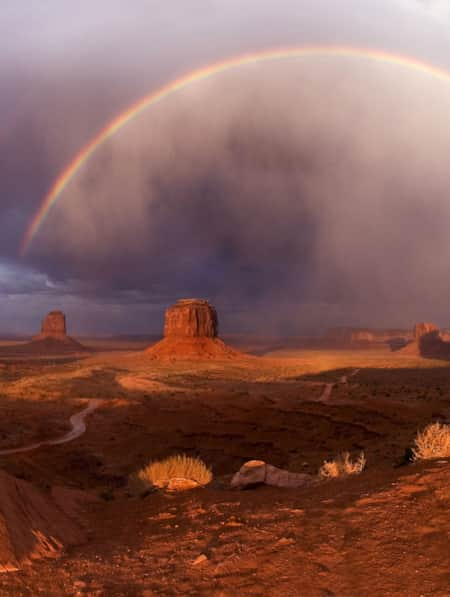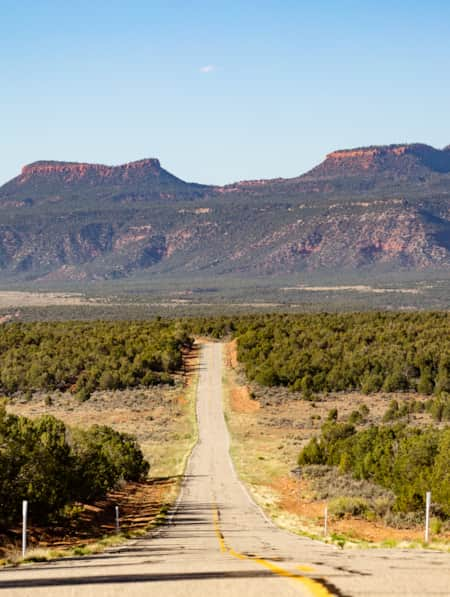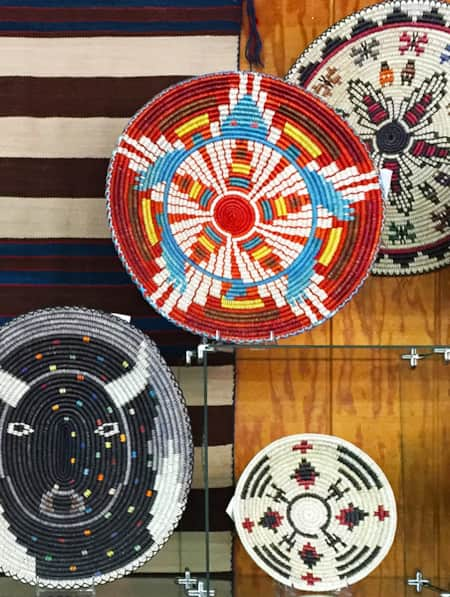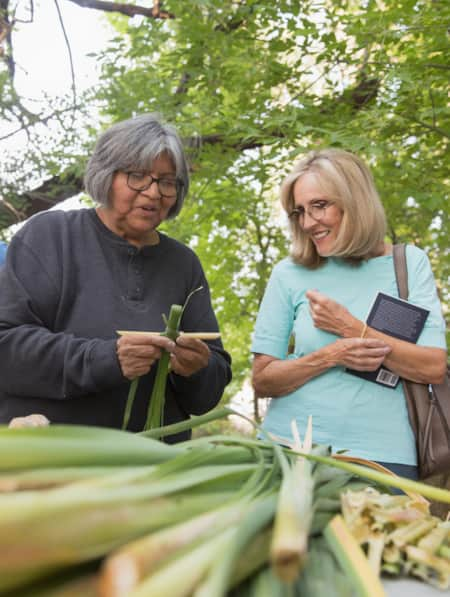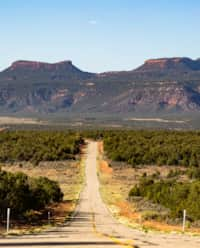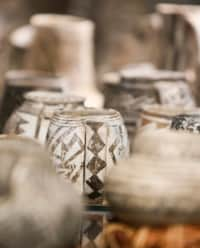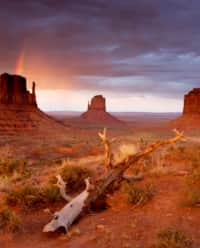Visit With Respect
Utah is filled with a variety of different state and federal land designations, all of which share a connection with Native Nations. Whether you're on Tribal lands (see a map), in a national park or anywhere outdoors in Utah, it's important to understand that there are strong Native ties, present and past, to these lands, even if it doesn’t fit in an official category. While many Nations welcome visitors for activities and events, each comes with its own set of regulations and etiquette. Do research to understand your destination and the customs of the people who live there. However, some general guidelines on visiting Native lands, reservations and sites include:
- Avoid taking pictures of people or events unless you have permission. Remember, this is where people live and work.
- Act respectfully at all times, but particularly at important sites and burial grounds.
- Do not touch or remove pottery or other artifacts you may find — this is a violation of federal law. (Watch: Voices of Bears Ears — The Archaeologists)
- You are a guest on the reservation and allowed on site with the permission. Act accordingly.
- Day hiking passes are required year-round for Bears Ears National Monument, visit recreation.gov to obtain a pass.
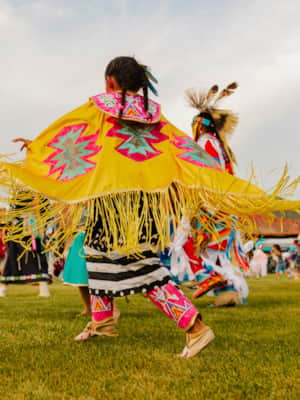
How to Attend a Powwow with Respect
Attending a powwow can be a very meaningful endeavor. Here are five tips to help you prepare.
Top Experiences by Region
Northern Utah
Federally-recognized Tribes: Northwestern Band of Shoshone Nation (Washakie Reservation), Confederated Tribes of Goshute, Skull Valley Band of Goshute, Ute Indian Tribe of Uintah and Ouray Reservation
Home to the Fremont peoples from approximately 300 Common Era (CE) to 1300 CE, Northern Utah is known in more recent history for three primary Nations. In the most northern part of the state, you’ll find the Shoshone, who have traditionally lived in Wyoming, Idaho and Utah. Their name translates as “high-growing grasses,” and they were traditionally hunter-gatherers who relied on bison as their primary sustenance.
The Goshute people live in the desert landscape in western Utah and eastern Nevada. The harsh environment meant that they remained largely isolated until settlement by white people in the mid-19th century.
The largest group is the Ute people, with ancestral lands east of the Great Salt Lake and into Colorado. The Uintah and Ouray Reservation, about 150 miles east of Salt Lake City, is the second-largest reservation in the country, at 4.5 million acres. The Nation currently has a membership of more than 2,000, with about half of the members living on the reservation.
Top Places to Visit
- This is the Place Native American Village
- Urban Indian Center of Salt Lake
- Nine Mile Canyon
- Natural History Museum of Utah
Annual Events
- Living Traditions Festival | Salt Lake City | May
- Heber Valley Pow Wow | Soldier Hollow | June
- Northern Ute Pow Wow | Fort Duchesne | July
- Native American Festival and Pow Wow | West Valley City | August
- Native American Pow Wow | Tooele | September
Top Experiences
- Tour the Native American Village, directed by Navajo Meredith Lam at Salt Lake City's This is the Place Heritage State Park.
- In Salt Lake City, check out the Native Voices exhibit that explores Native American art and culture at the Natural History Museum of Utah.
- In Salt Lake City’s Liberty Park, see both artifacts and contemporary Native American art at the Chase Home Museum of Utah Folk Art.
- Take a drive on Nine Mile Canyon Road (about 10 miles southeast of Price and a two-hour drive from Salt Lake City) and stop to see the displays of Fremont petroglyphs along the way.

A Shoshone woman teaching how to make cattail dolls at the Meet the Shoshone event in Weber County.
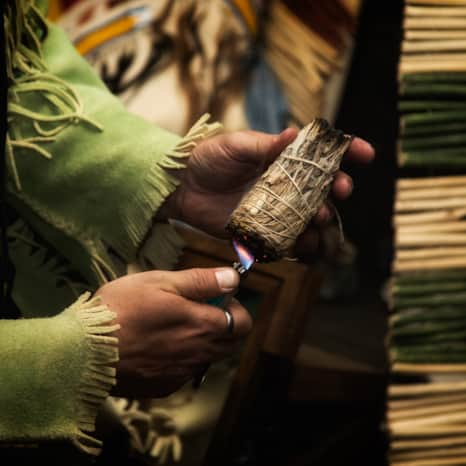
A Shoshone tribal member burning sage and sweetgrass.
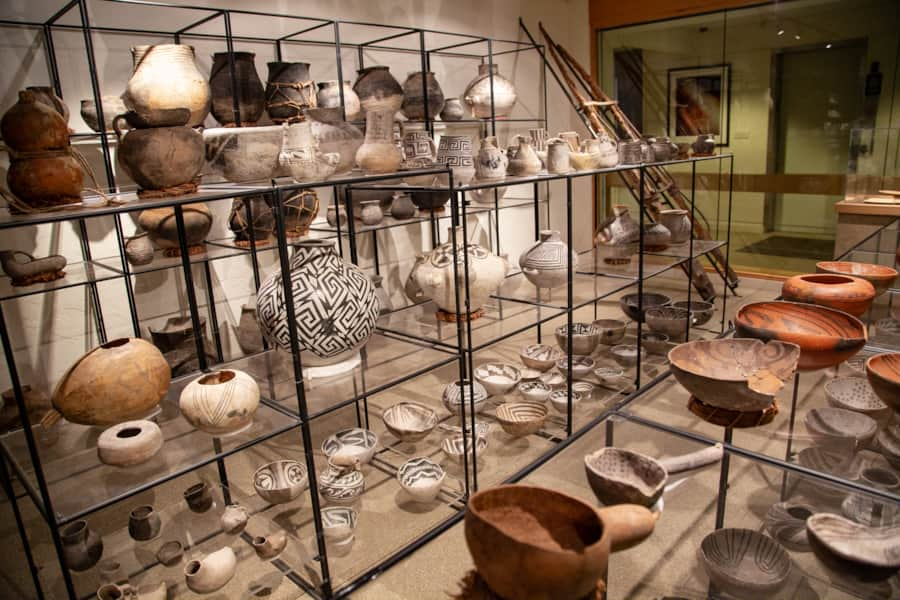
Edge of the Cedars State Park Museum
"If there’s water nearby, I'll go there for solace. I grew up on that [San Juan] river, stepping its rapids and floating through my childhood. Both the river and I have changed, but our course remains the same."
– Tacey M. Atsitty, Diné, about her poem "River Sonnet"
Southeastern Utah
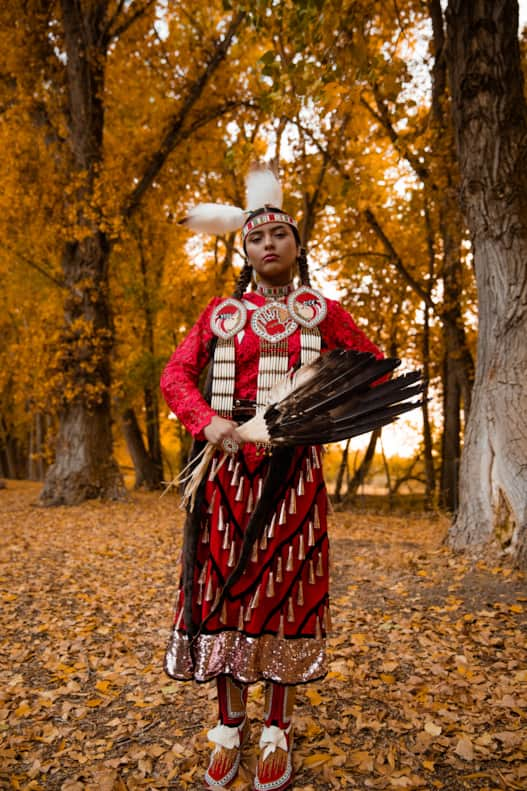
Mari Tsosie, Navajo/Diné
Photo: Samuel Jake, Navajo/Diné
Top Places to Visit
- Monument Valley Navajo Tribal Park
- Edge of the Cedars State Park Museum
- Bears Ears National Monument
- Hovenweep National Monument
Annual Events
- Ééhaniih Day Celebration | Navajo Mountain | August
- Bear Dance: Traditional Hand and Stick Games | White Mesa | September
Top Experiences
- Tour Monument Valley with a Native guide (look up Airbnb experiences or offerings at Goulding’s, which offers exclusive tours of the area).
- Visit House on Fire during sunrise or sunset to get iconic photos of this well-preserved site in Mule Canyon outside of Blanding.
- Go inside a reconstructed kiva at Edge of the Cedars State Park Museum in Blanding to get a glimpse into the ancient life of Ancestral Puebloan lifestyle and architecture, as well as a large collection of pottery and artifacts.
- Head to Bears Ears Education Center in Bluff to learn how to respectfully visit the Bears Ears National Monument, one of the largest archeological sites in the world.
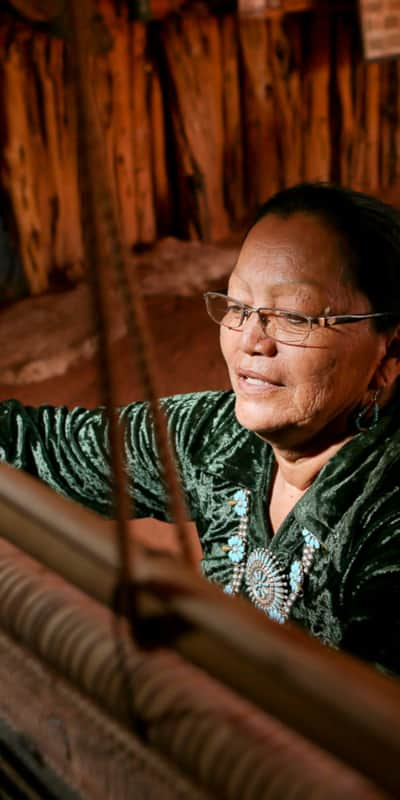
Southwestern Utah
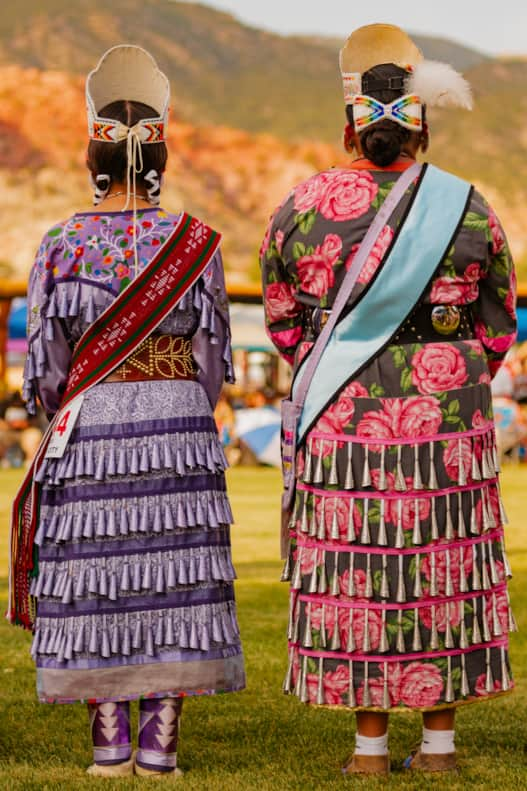
The Paiute Tribe regained federal recognition in 1980. The tribe celebrates its reinstatement annually in Cedar City with the Paiute Restoration Powwow held in June.
Photo: Samuel Jake
Top Places to Visit
- Fremont Indian State Park and Museum
- Anasazi State Park and Museum
- Cedar Breaks National Monument
- Zion National Park
Annual Events
- Paiute Restoration Days Pow Wow | Cedar City | June
- Western Legends Heritage & Music Festival | Kanab | August
- Cedar Band of Paiutes Thanksgiving Pow Wow | Cedar City | November
Top Experiences
- Hike at Parowan Gap to see the impressive collection of petroglyphs, most likely made by the Fremont, just outside of Cedar City.
- Enjoy an afternoon at Navajo Lake, east of Cedar City, which was known to the Paiute Indians as Pa-cu-ay, which means “cloud lake.” Boating, fishing, swimming, and mountain biking are all popular here now.
- Take a drive on scenic Johnson Canyon Road, outside of Kanab, where you can see several petroglyph sites.
- Go off-roading on the 245-mile Paiute ATV Trail in the Fishlake National Forest and explore upwards of 900 miles of spur trails you will find off the main loop.
-

Bears Ears Area Starter Kit
A pair of distinctive, towering buttes stand against beautiful scenery. We call them "Bears Ears." With the help of local expertise, respectfully explore ancestral cliff dwellings and massive natural bridges in a fascinating desert ecosystem.
-

Native Spirit
Countless generations of Native Americans have called the landscapes of Utah home, from the hunter-gatherers of the prehistoric era to the more than 50 Native Nations currently in Utah.
-

Phoenix to Monument Valley: Exploring Utah's Historic Sites
Share the same reverence for the landscape as the first prehistoric inhabitants and the modern-day Native Nations as you embark on this six-day road trip to the Monument Valley region.
